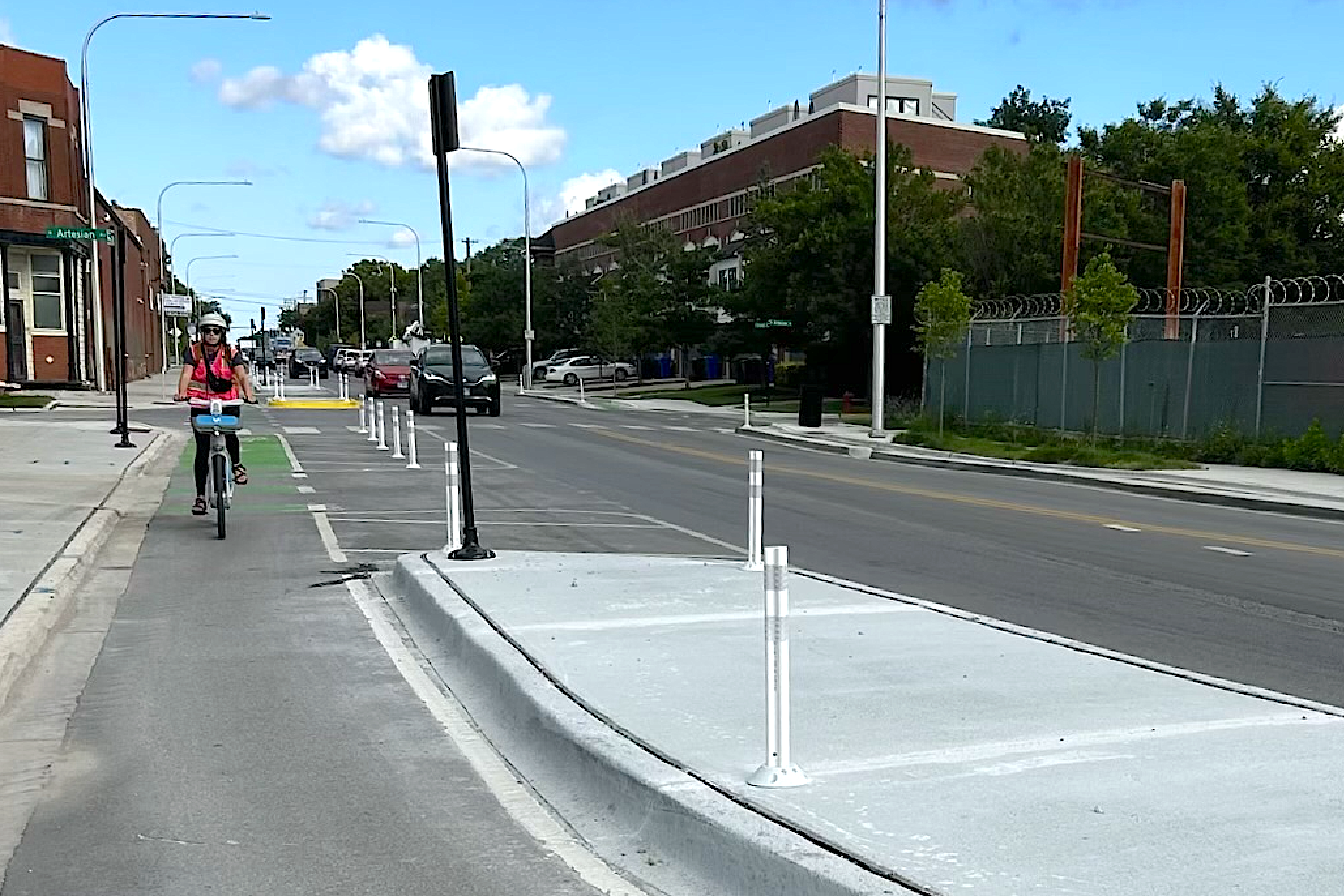
This morning, the Chicago Department of Transportation cut the ribbon on the first phase of exciting walk/bike/transit improvements to Grand Avenue. The roadway, a northwest-southeast diagonal on most of the West Side, is an east-west street (500 N) east of Western Avenue (2400 W.)
Phase 1 included the 1.2-mile stretch of Grand between Chicago Avenue (800 N., about 2900 W.) and Damen Avenue (2000 W.) in the Humboldt Park and West Town community areas.
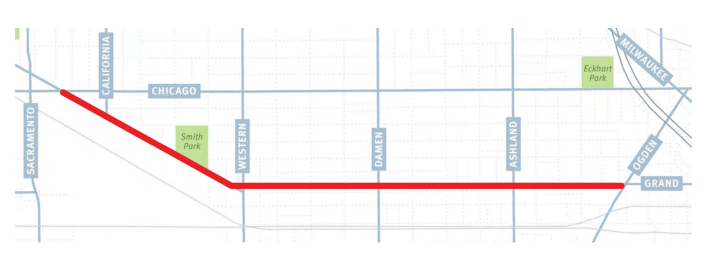
Phase 2, with upgrades from Damen to Ogden Avenue (about 1300 W.) is, slated for next spring.
For the first phase, the formerly wide expanse of concrete – previously marked only by a faded dashed center line – has gotten a Complete Streets makeover. Now there are concrete- and/or parking-protected bike lanes, pedestrian islands, bus boarding islands, raised crosswalks, LED streetlights, and accessible pedestrian signals that are helpful for people with visual disabilities. The City also widened sidewalks and planted new trees. The transformation is stunning.
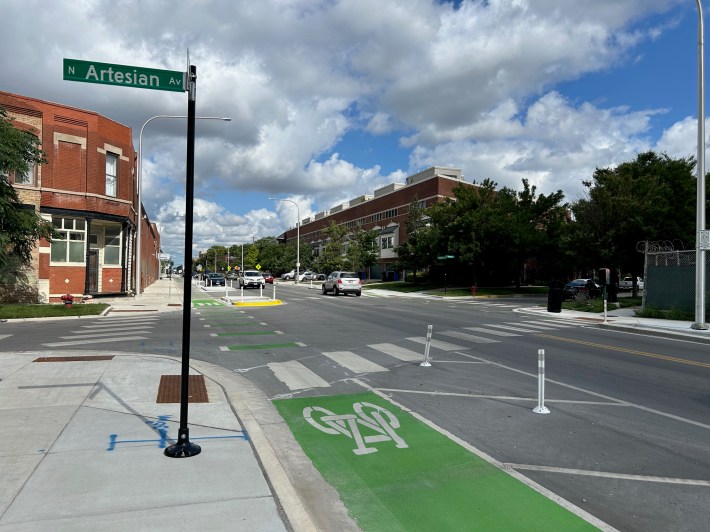
Chicago's concrete PBLs have been found to have a major impact on reducing crashes, but there's usually some pushback from neighbors to projects like this that involve converting a significant number of curbside car parking spots. That's in spite of the fact that CDOT typically only uses that approach on street segments with relatively low curbside parking use, which is the case with Grand from Chicago Avenue to Damen.
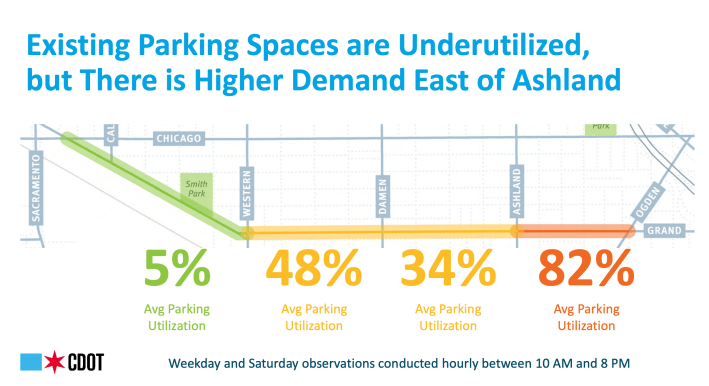
A few merchants and residents were wary of the plan. But there was a big turnout of supporters to a meeting on the project in June 2023.

This morning's weather was ideal for the ribbon cutting, which took place at the southwest corner of Western and Grand, in a new public plaza that was part of the project. A slip lane, which previously once allowed fast-moving eastbound cars on Grand to whip around the corner onto Western without hitting the breaks, is now gone.

In its place are sidewalk pavers – designed as a testament to those who struggled during Covid-19 pandemic.

And there are now large plantings of irises, grasses and other native plants, designed by CDOT landscaper Kris Sorich. Josh Garber’s sculpture “Episodic” now loops above an oasis of greenery instead of swift streams of vehicle traffic on all sides.
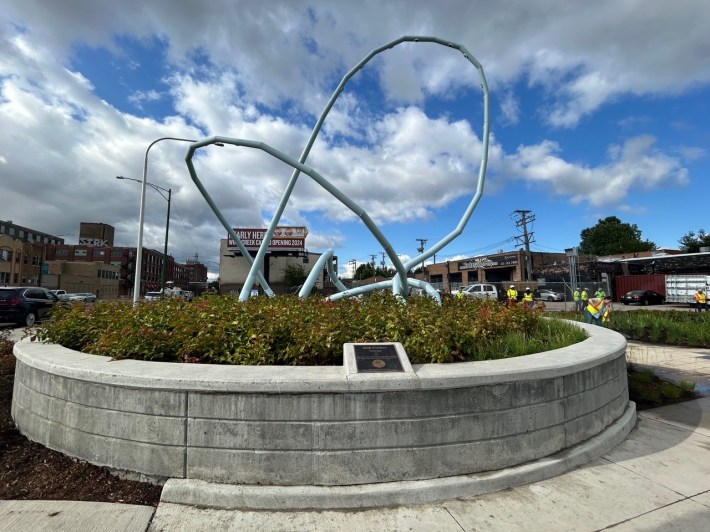
The program started a few minutes late, in part due to the noise from a street sweeper who chose a timely moment to clean the curbside a dozen feet from the microphones and local news cameras. CDOT Commissioner Tom Carney spoke about the diverse mix of land uses – industrial, residential, retail, parks, and schools – within the project corridor. As a result, Grand Avenue is used by the operators of large and small trucks, as well as the CTA's 65 Grand bus route, and people on foot and bicycles. "The project we’re celebrating today exemplifies Chicago and CDOT’s Complete Streets approach to balancing the needs of all road users to create a safer and more inviting space," Carney said.
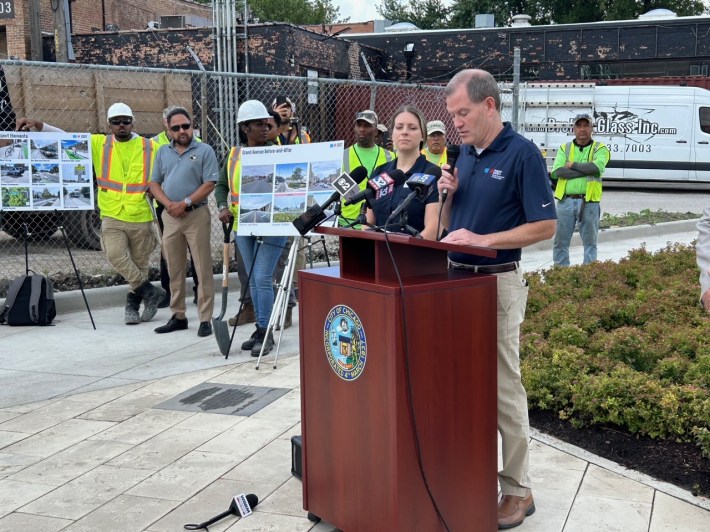
According to CDOT, Grand Avenue has long been plagued by speeding drivers, with many going more that 10 mph over the 30 mph limit, and some clocking in at terrifying speeds of more than 70 mph. Wide travel lanes encouraged these potentially deadly speeds, with reckless motorists blasting by bicyclists traveling on unmarked, non-protected pavement. Speeding drivers also endangered the pedestrians who frequently cross the road to reach coffee shops, bakeries, parks, schools, and the nearby Western Avenue Metra station.
The new traffic calming measures, including right-sized travel lanes for drivers, shortened crossing distances for pedestrians, and the PBLs have transformed a transportation Grand Guignol into a calm and organized multi-modal corridor.
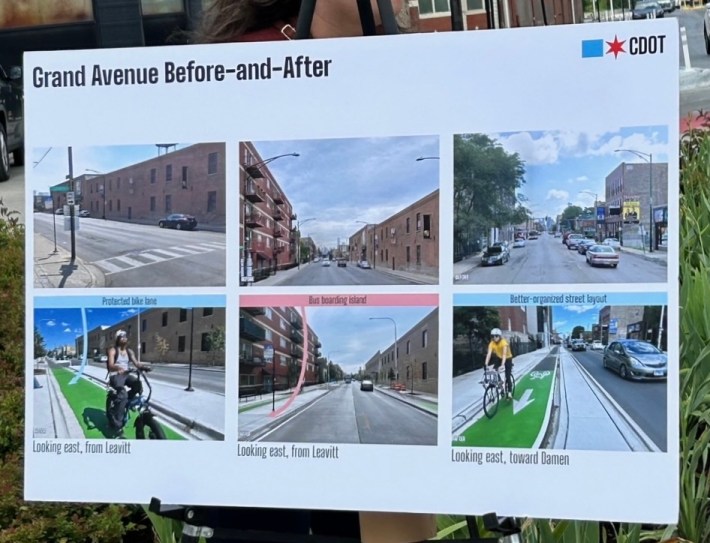
Steve DeBretto, CEO of the business incubator ICNC (Industrial Council of Northwest Chicago) remarked on what he called a positive planning process between CDOT and local businesses. "When industrial businesses learn of a project like this, it’s natural for them to have concerns," he said. "Business owners ask, 'Is this protected bike lane going to prevent my delivery driver from making the turn he normally does?' Things like that can create opposition to the project, unless staff who implement it come out to the neighborhood, come out to hear those concerns. And that’s what CDOT did."
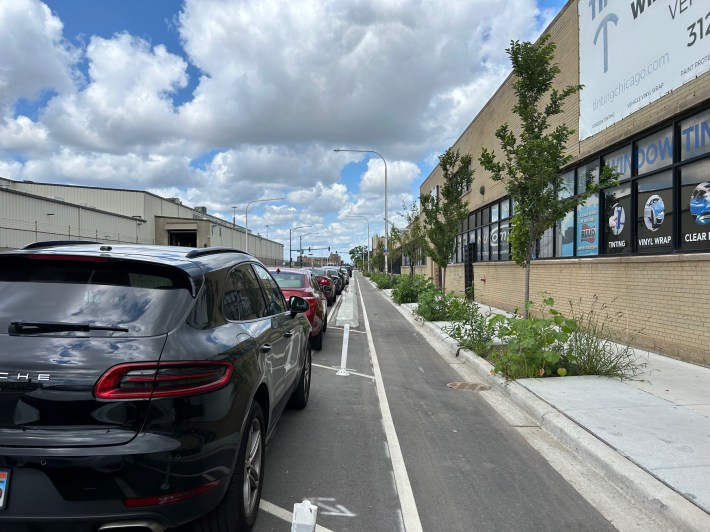
Kate Jakubas, founder of Meliora cleaning products and a neighborhood resident who walks to work, celebrated the improvements as good for both public safety and local businesses. "My business relies on truck traffic, but we've got employees as well, and we care about their safety," she said. "Their commute is often the most dangerous part of their day. We have a lot of folks who walk, cycle, and take public transportation. The ability to open up the corridor and have these different modes of transportation really helps our business thrive."
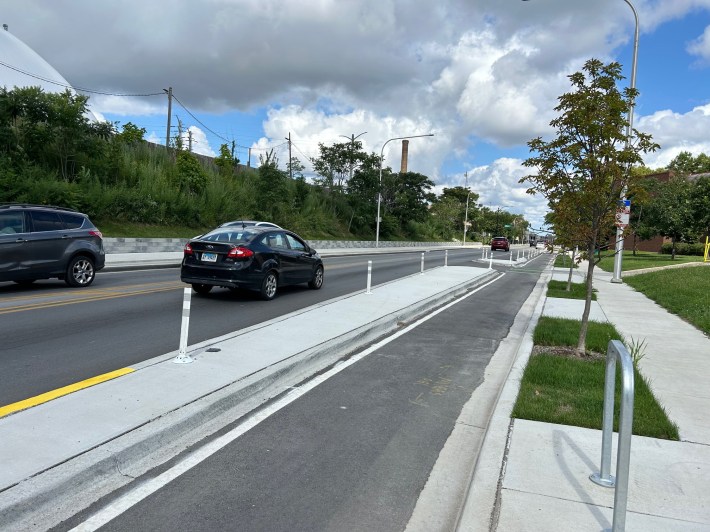
After the program, CDOT's Complete Streets czar Dave Smith told Streetsblog that the community response has so far been positive. "People have said that it’s more enjoyable to walk, bike, and just spend time in the neighborhood."
A street makeover that works for people traveling on foot, bikes, and buses, as well as in cars and trucks? Sounds like a Grand solution!

Did you appreciate this post? Please consider making a tax-deductible donation, to help keep Streetsblog Chicago's sustainable transportation news and advocacy articles paywall-free.
